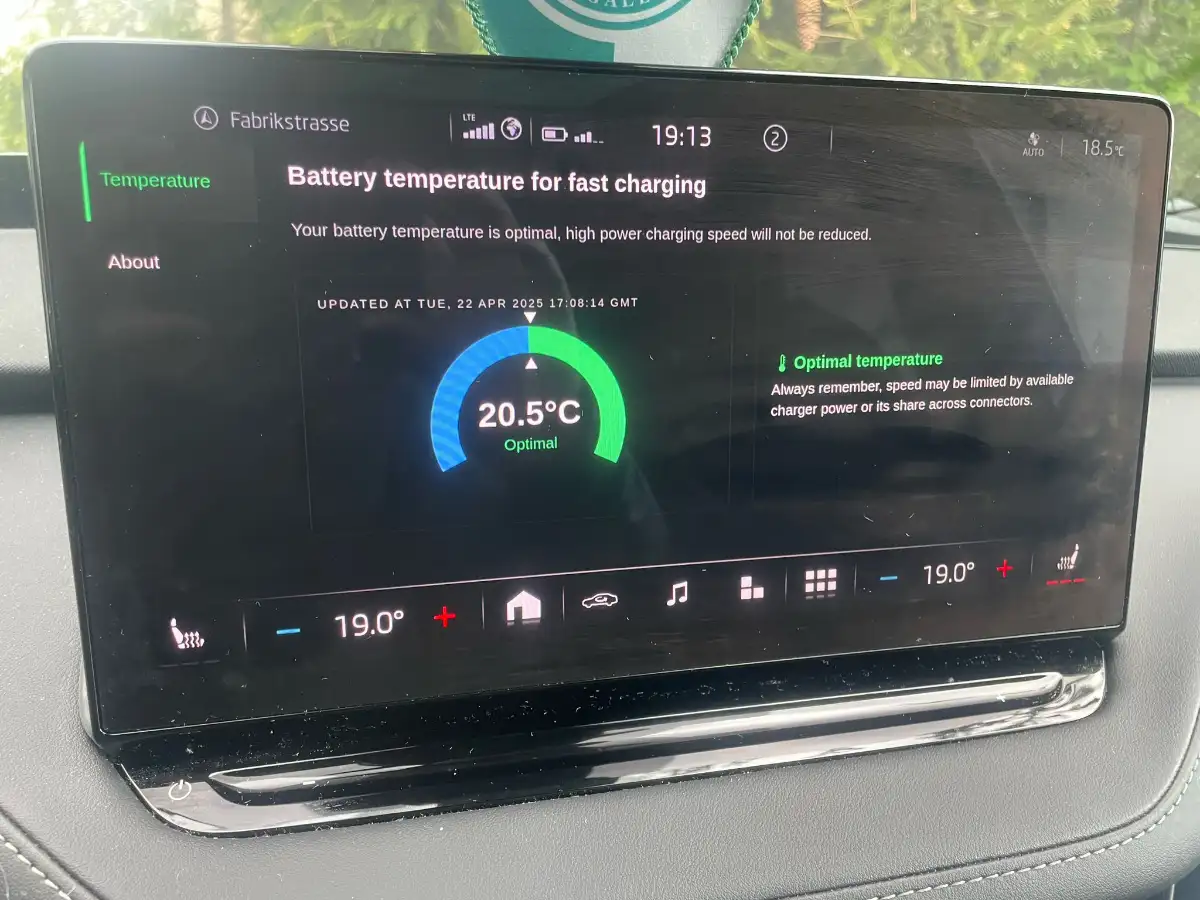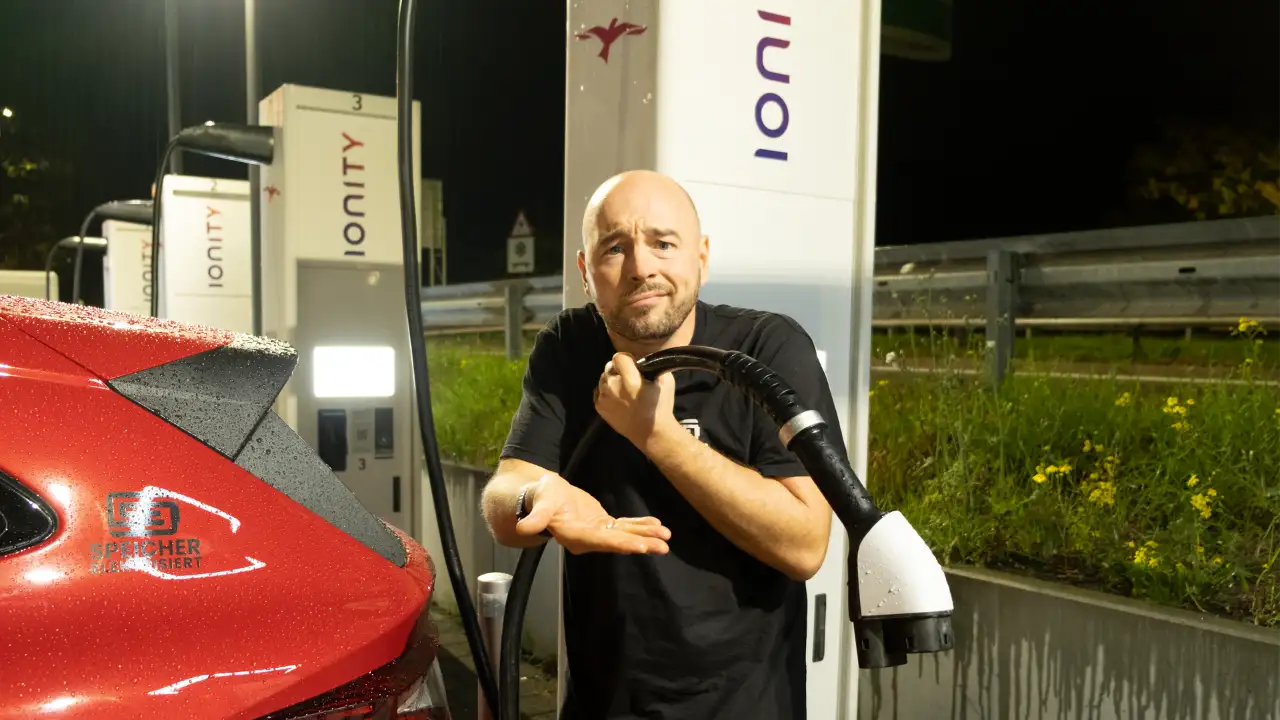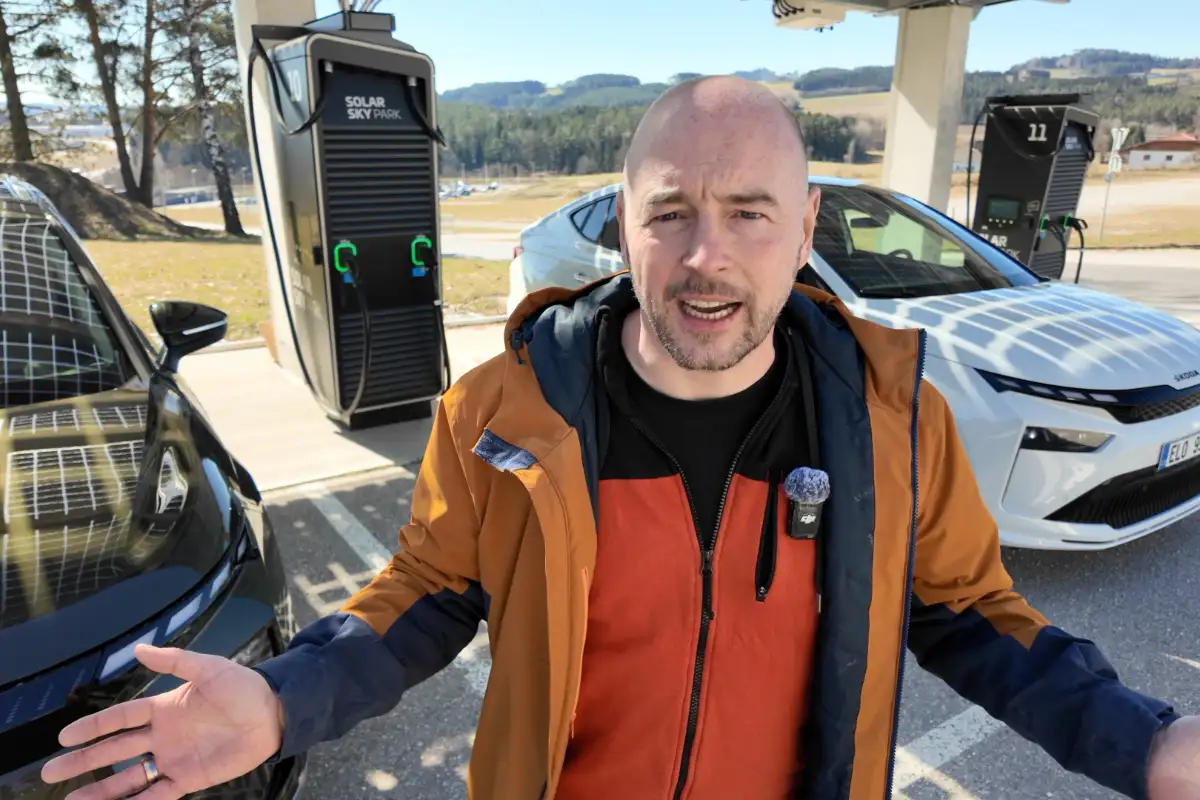Battery preheating is a well-known feature to improve charging speed in cold conditions. But does it also make driving more efficient? Can a preheated battery reduce energy consumption and increase range – or does the energy used for heating outweigh the potential savings?
That’s exactly what this test set out to examine. The Škoda ELROQ was tested under identical conditions twice:
- Once with a cold battery (no preheating)
- Once with battery preheating activated before departure
Why Preheat the Battery?
Battery efficiency strongly depends on temperature. When it’s too cold, internal resistance increases, leading to energy losses during both acceleration and recuperation.rstand, was zu Energieverlusten führt – sowohl beim Beschleunigen als auch beim Rekuperieren.
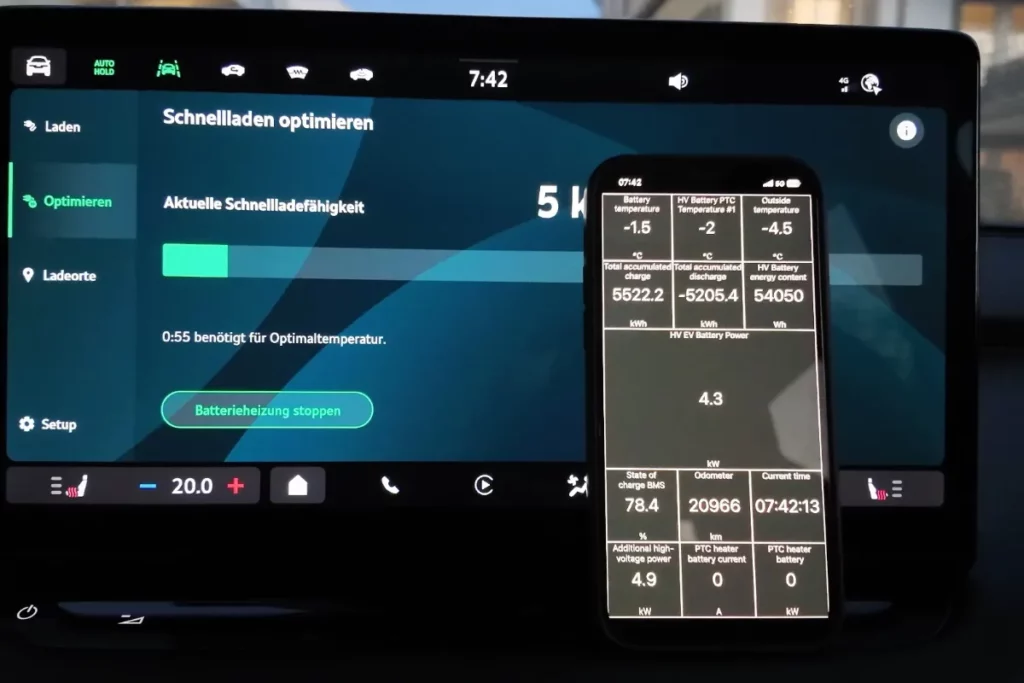
Test Objectives
- Does preheating consume more energy than it saves?
- Does it actually extend range during winter driving?
- Can preheating have a positive effect on real-world driving efficiency?
Test Setup: Side-by-Side Comparison
Both test drives were conducted under nearly identical conditions:
- Outside temperature: –4°C to –8°C
- Initial battery temperature: –1.5°C
- Route: Mix of city, rural roads, and motorway
- Driving style: Consistent and smooth, no unnecessary consumption
- Initial usable battery energy: Almost identical (difference of just 0.35 kWh)
Preheating Method
- Battery preheated for 40 minutes
- Temperature increased from –2°C to 17.5°C
- Heater consumed a constant 5 kW, totaling 3.3 kWh
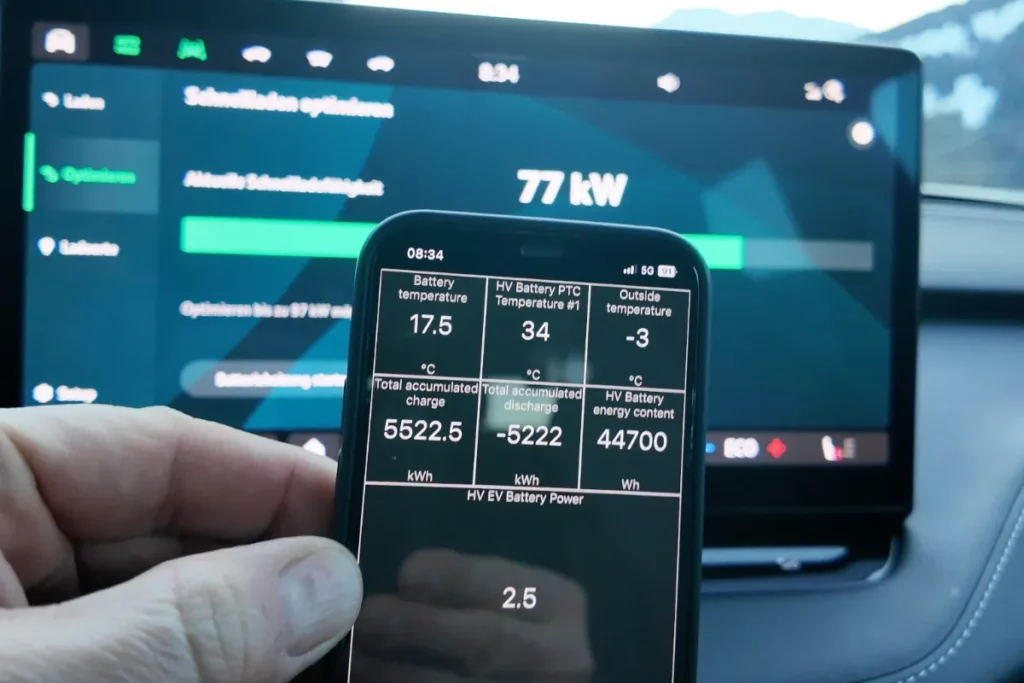
Results: Consumption and Efficiency Compared
| Condition | Avg. Consumption | Battery Temp. | Remaining Range | Final SoC |
|---|---|---|---|---|
| Without Preheating | 21.7 kWh/100 km | 11°C | 99 km | 33% |
| With Preheating | 22.3 kWh/100 km | 17°C | 120 km | 32% |
At first glance, it may seem like preheating increases consumption (+0.6 kWh/100 km).
But the battery and energy data tell a different story.
Why Was the Range Higher With Preheating?
Warmer Battery = More Usable Energy
- A cold battery has lower available capacity
- A warmer battery provides more usable energy, even at the same SoC
- Less energy is lost due to internal resistance
- Recuperation was 0.7 kWh higher with preheating
Battery Energy Use in Detail
- Without Preheating: 34.7 kWh consumed
- With Preheating: Only 31.75 kWh consumed
- Despite slightly higher indicated consumption, the battery was used more efficiently
When Is Preheating Worthwhile?
Preheating can indeed improve range – but its usefulness depends on the context:
Preheating is worthwhile if…
- The trip is long enough (short drives see minimal benefit)
- Battery temperature is below 5°C
- You expect to drive at higher speeds, e.g. after urban driving onto the motorway
Preheating is not worthwhile if…
- The trip is short – energy used for heating outweighs efficiency gains
- Battery is already above 15°C – little to no gain in efficiency
Conclusion:
Battery preheating can improve real-world efficiency and range – but only if used smartly.
It’s an effective tool in cold conditions, especially on longer trips or when high power demand is expected.
Preheating kann im Winter die Reichweite und Effizienz verbessern, wenn es gezielt eingesetzt wird.
Besonders bei längeren Fahrten und tiefen Temperaturen ist der Effekt deutlich spürbar – auch wenn der Energieverbrauch auf den ersten Blick höher erscheint.


